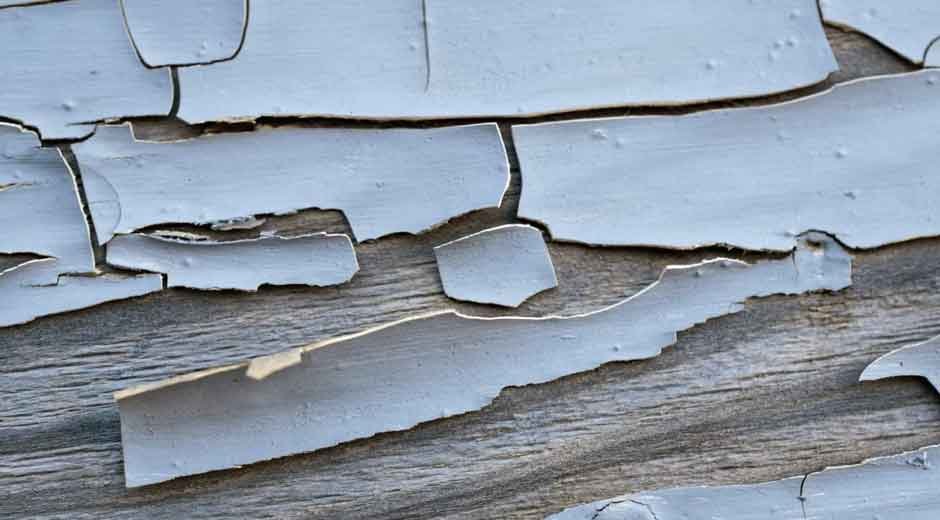You’ve finally settled into your rental—the furniture is in, the kettle is on, and the walls look pretty decent or maybe even freshly painted.
Then, one day, you spot a small curl of paint hanging off the wall like it’s trying to make a run for it. The next thing you know, there’s an entire flaky patch that looks like a bad sunburn.
But don’t grab that paint roller or text your landlord in all caps just yet. Let’s talk about what’s really going on and how to deal with it without causing a bigger mess.
Assess the Severity of the Problem
Before you start considering which fix you’ll go for, you need to know what you’re dealing with.
Start by taking a good look around. Is the peeling in one tiny patch, or are bits flaking off like confetti after a party? If it’s spreading, that’s your first clue that something else might be going on underneath.
If you notice dampness and catch a musty smell in the attic or basement, you could be looking at a moisture issue.
While you’re at it, check for mould. The warning signs aren’t always obvious. That dark spot in the corner might look innocent, but it could signal trouble lurking beneath the paint.
Now, if we’re talking about a small patch, maybe where steam from the shower has loosened a bit of paint, light sanding and a fresh coat can sort it out. But if the paint is coming off in sheets, or you can see cracks, bubbling, or discolouration beneath, that’s not a DIY job.
Document the Issue
Now that you’ve scoped out the situation and resisted the urge to start peeling the paint even more, it’s time to grab your phone. The more details you capture, the easier it’ll be to explain what’s going on later.
So, snap some clear photos of the flaky areas. We recommend taking a few from different angles and trying to get decent lighting to make sure the issue is obvious.
Next, jot down a few notes while they’re fresh in your mind. When did you first notice the peeling? Was it after a stretch of wet weather? Did you spot any leaks, condensation, or odd smells around the same time?
These little clues help build the picture and make you look incredibly organised when you talk to your landlord or property manager.
Put all the info in one place. A folder on your laptop or a shared drive works well. That way, if there’s any back and forth with your landlord, you’ll have proof ready to go.
Review the Lease Agreement
Before doing anything else, pull out your lease. It’s probably sitting in your inbox or a folder somewhere, waiting for this exact moment. The terms in there outline the areas you’re responsible for fixing and the ones that should be left to your property manager.
Look for clauses about home repairs or property upkeep. Sometimes, you’re allowed to do minor cosmetic fixes, but this isn’t always the case.
Your lease might also state that you need written approval before touching the walls. Even if it’s a small patch of paint, it still counts as an alteration.
To save time later, keep a digital copy of your lease on hand. That way, if your landlord questions anything, you’ll have access to all the paperwork you need.
Reach Out to Your Landlord
When you’re ready, get in touch with your property manager by sending over an email that’s polite and to the point. Include the photos you took and describe what’s happening.
Make it easy for them to understand why it needs attention. You could mention that the paint is coming off faster than expected or that it might be linked to damp or mould. That usually speeds things up.
Stay calm, even if there’s no immediate reply. Landlords aren’t always quick, but being pleasant will get you better results than hounding them or sounding pushy. If they stay silent too long, though, a gentle follow-up will keep things moving.
Consider Temporary Fixes
In the meantime, there’s nothing wrong with trying a few quick fixes. For instance, painter’s tape can stop the peeling from spreading, as it’ll hold the loose bits in place without doing more damage.
Another option is using a light, clear sealant to keep air and moisture out of the peeling area. It’s a good stopgap if the issue is near a humid spot, like a bathroom wall or window frame.
Just make sure it won’t change how the wall looks or feels. You don’t want to make things worse or breach your lease.
These tricks aren’t long-term solutions. They’re more about buying you time while you wait for proper repairs.
And if you need to get on a ladder or reach up high, don’t risk it. Always keep your safety in mind.
Know When to Involve Professionals
Sometimes, it’s just not a DIY job. A few flakes here and there? That’s manageable. However, when big sections start peeling off or you spot cracks underneath, that’s your sign to step back and think it through.
If moisture, mildew, or structural problems show up, get someone experienced to take a look. Paint flaking near windows or ceiling areas might indicate failed seals or active water damage.
In a bathroom, that flaky paint might be the first clue of a leak you didn’t know about. Getting it checked out professionally can stop more serious issues in their tracks.
If you’re planning to move out soon, it’s a smart idea to hire a bond cleaning company after the repairs are done. They can take care of any leftover dust, paint specks, or surface marks, leaving the place spotless.
Before hiring anyone, though, talk to your landlord again. They might already have someone in mind or prefer to manage repairs themselves. It could also be that the cost is covered under your agreement, which will make things easier.
Conclusion
Peeling paint doesn’t stand a chance against a proactive renter like you. You’ve done the detective work, kept things civil, and handled it with class—no angry emails required.
It’s a small fix, sure, but it’s also a reminder that you know what you’re doing. Now, give yourself a pat on the back, or better yet, kick back with a cuppa while you wait for your landlord to get back to you.

